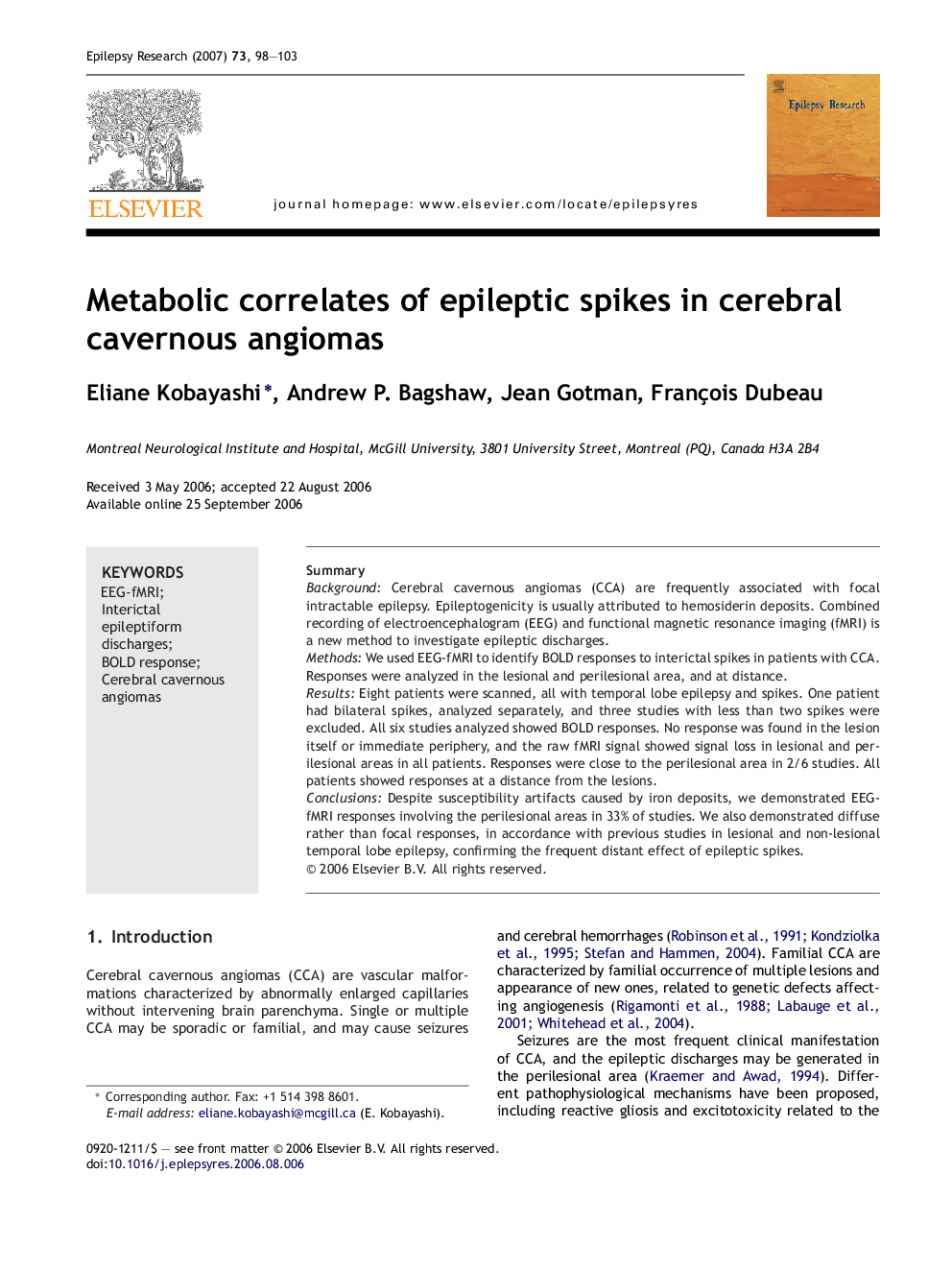| Article ID | Journal | Published Year | Pages | File Type |
|---|---|---|---|---|
| 3053143 | Epilepsy Research | 2007 | 6 Pages |
SummaryBackgroundCerebral cavernous angiomas (CCA) are frequently associated with focal intractable epilepsy. Epileptogenicity is usually attributed to hemosiderin deposits. Combined recording of electroencephalogram (EEG) and functional magnetic resonance imaging (fMRI) is a new method to investigate epileptic discharges.MethodsWe used EEG-fMRI to identify BOLD responses to interictal spikes in patients with CCA. Responses were analyzed in the lesional and perilesional area, and at distance.ResultsEight patients were scanned, all with temporal lobe epilepsy and spikes. One patient had bilateral spikes, analyzed separately, and three studies with less than two spikes were excluded. All six studies analyzed showed BOLD responses. No response was found in the lesion itself or immediate periphery, and the raw fMRI signal showed signal loss in lesional and perilesional areas in all patients. Responses were close to the perilesional area in 2/6 studies. All patients showed responses at a distance from the lesions.ConclusionsDespite susceptibility artifacts caused by iron deposits, we demonstrated EEG-fMRI responses involving the perilesional areas in 33% of studies. We also demonstrated diffuse rather than focal responses, in accordance with previous studies in lesional and non-lesional temporal lobe epilepsy, confirming the frequent distant effect of epileptic spikes.
